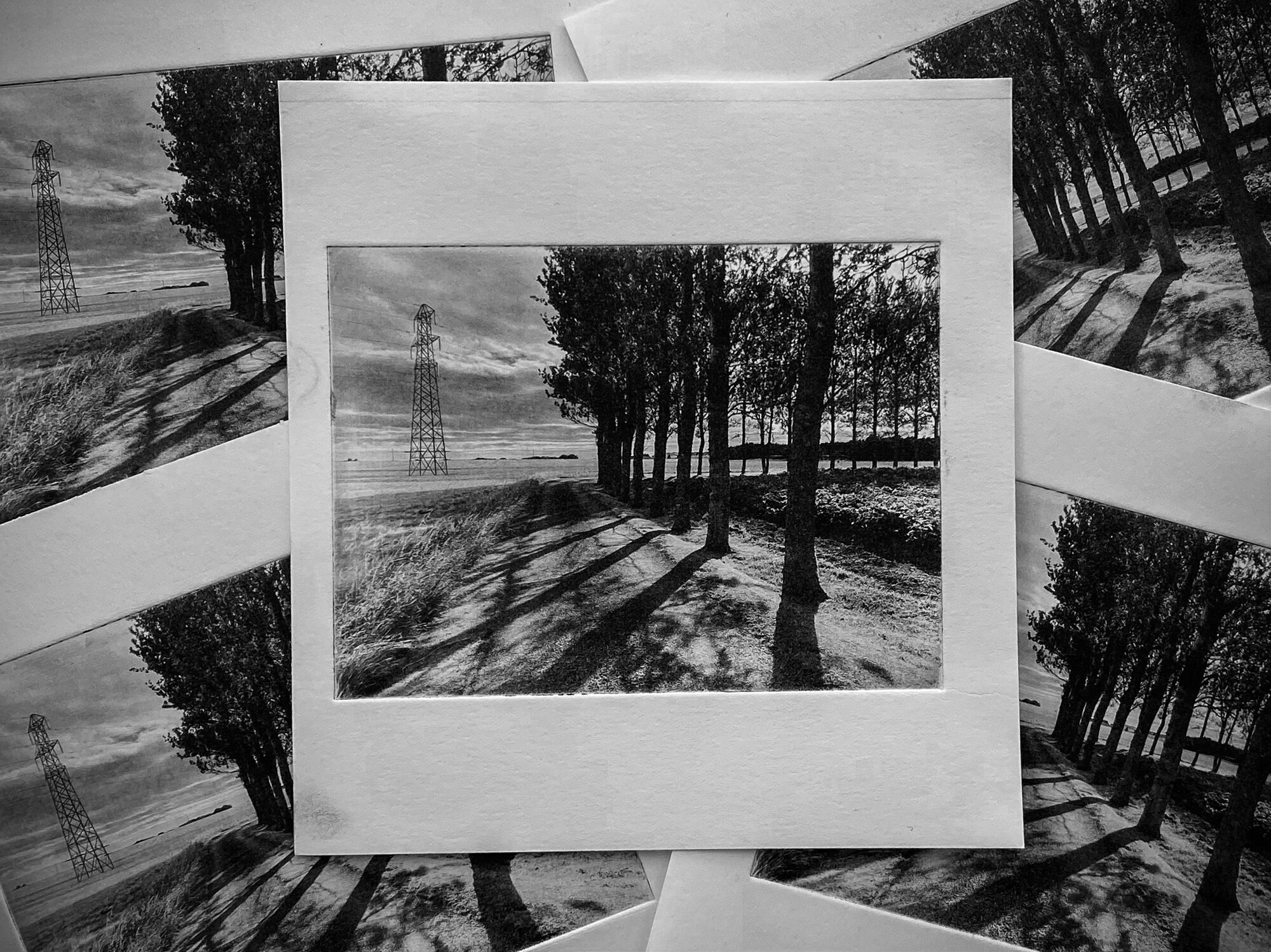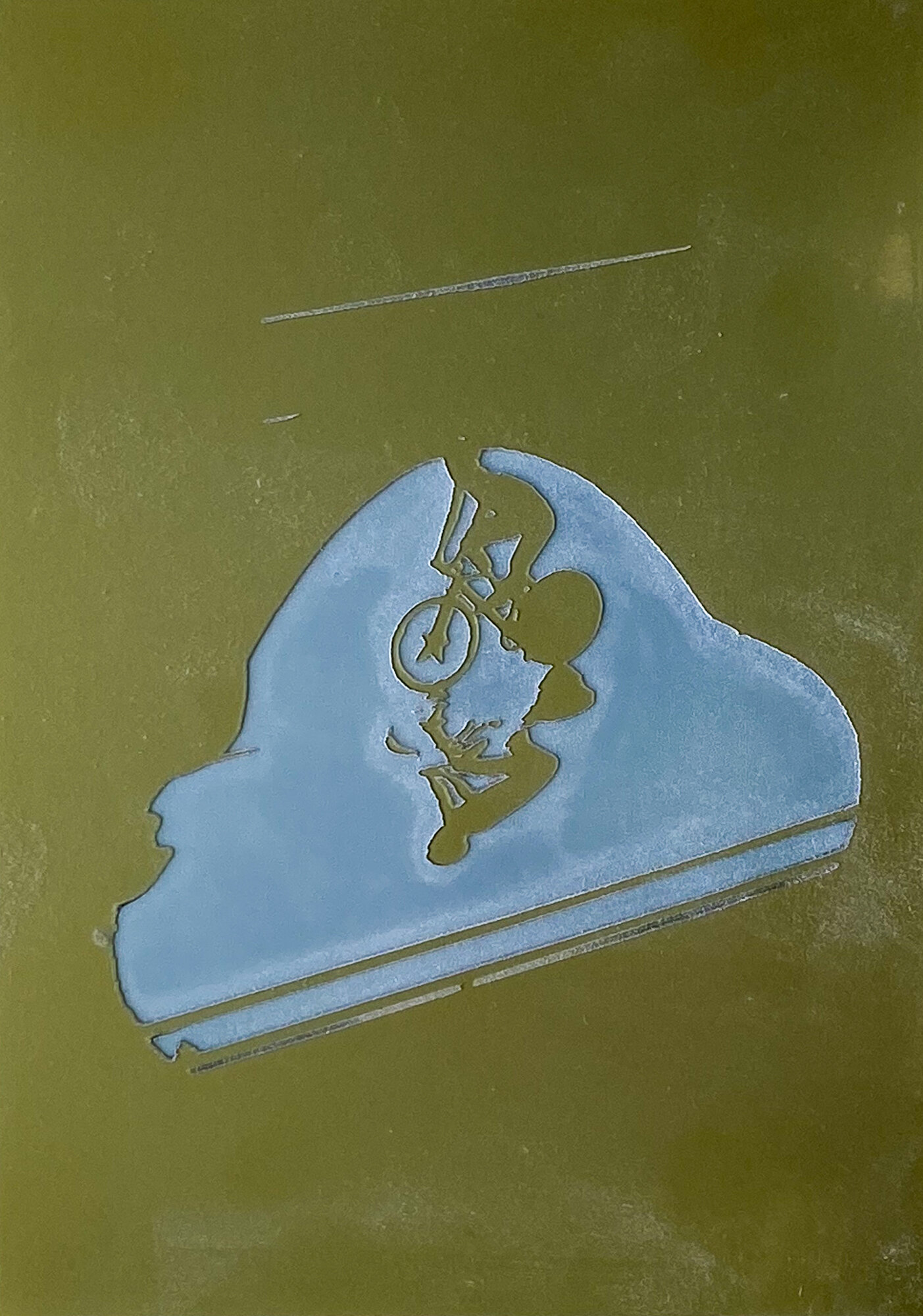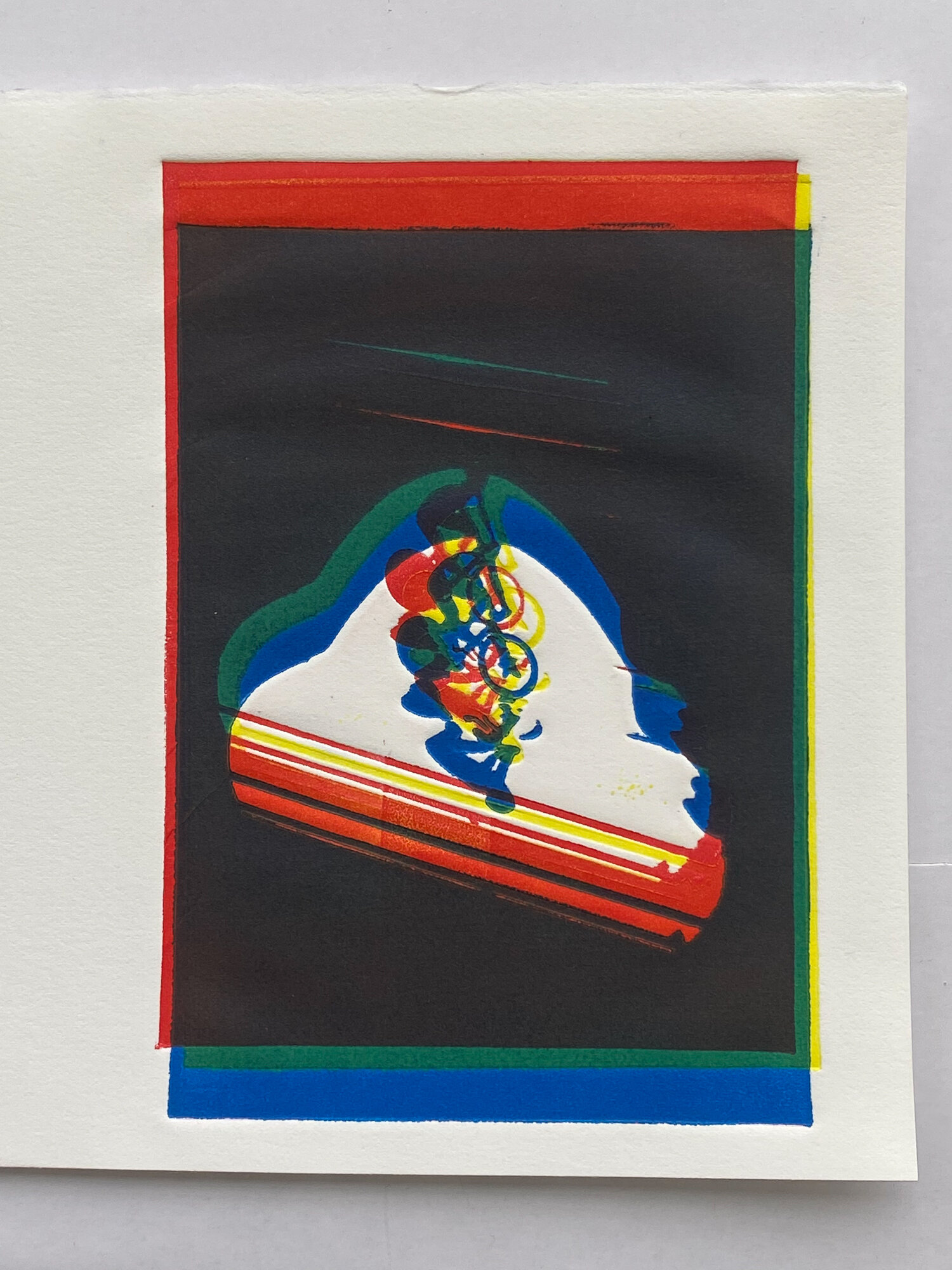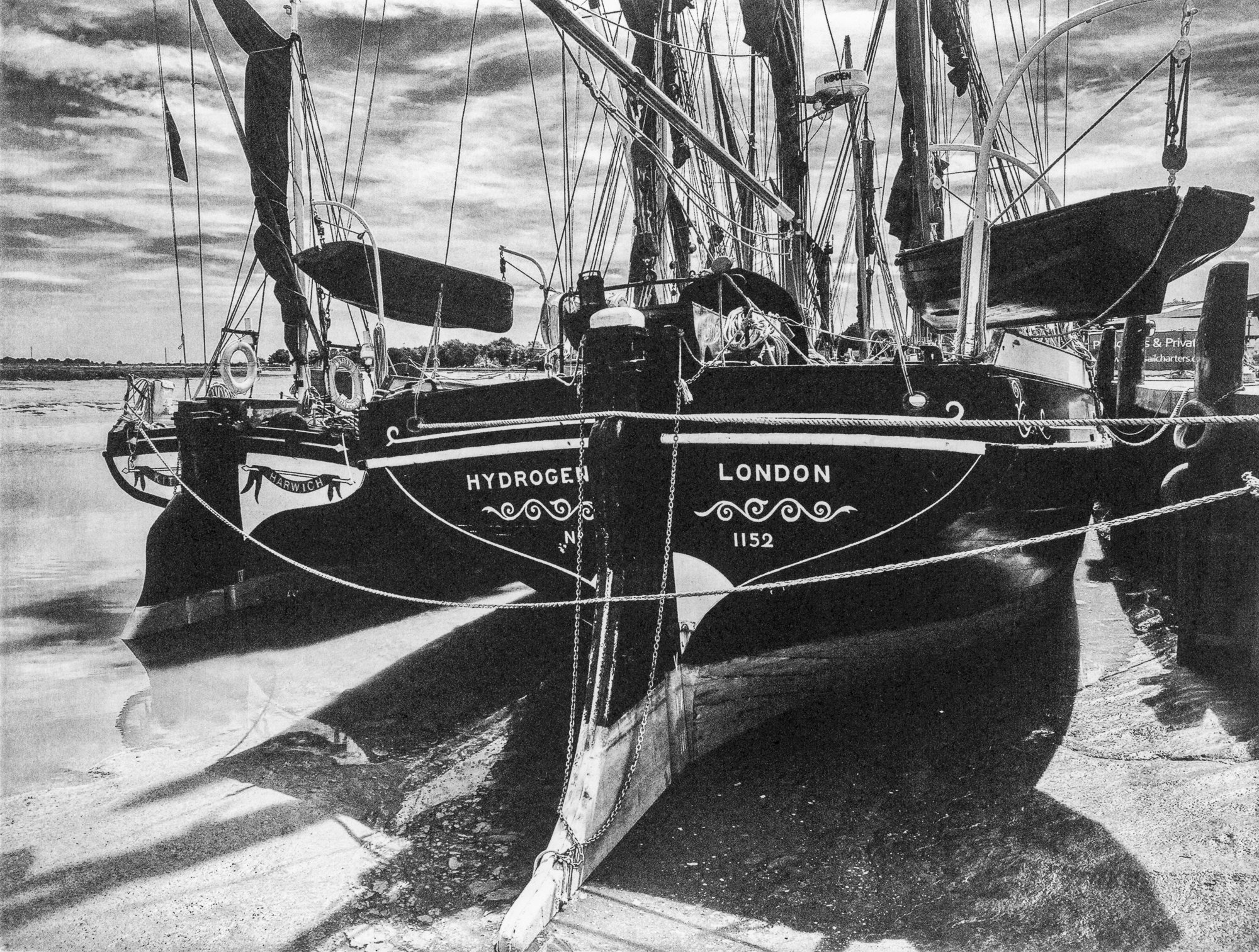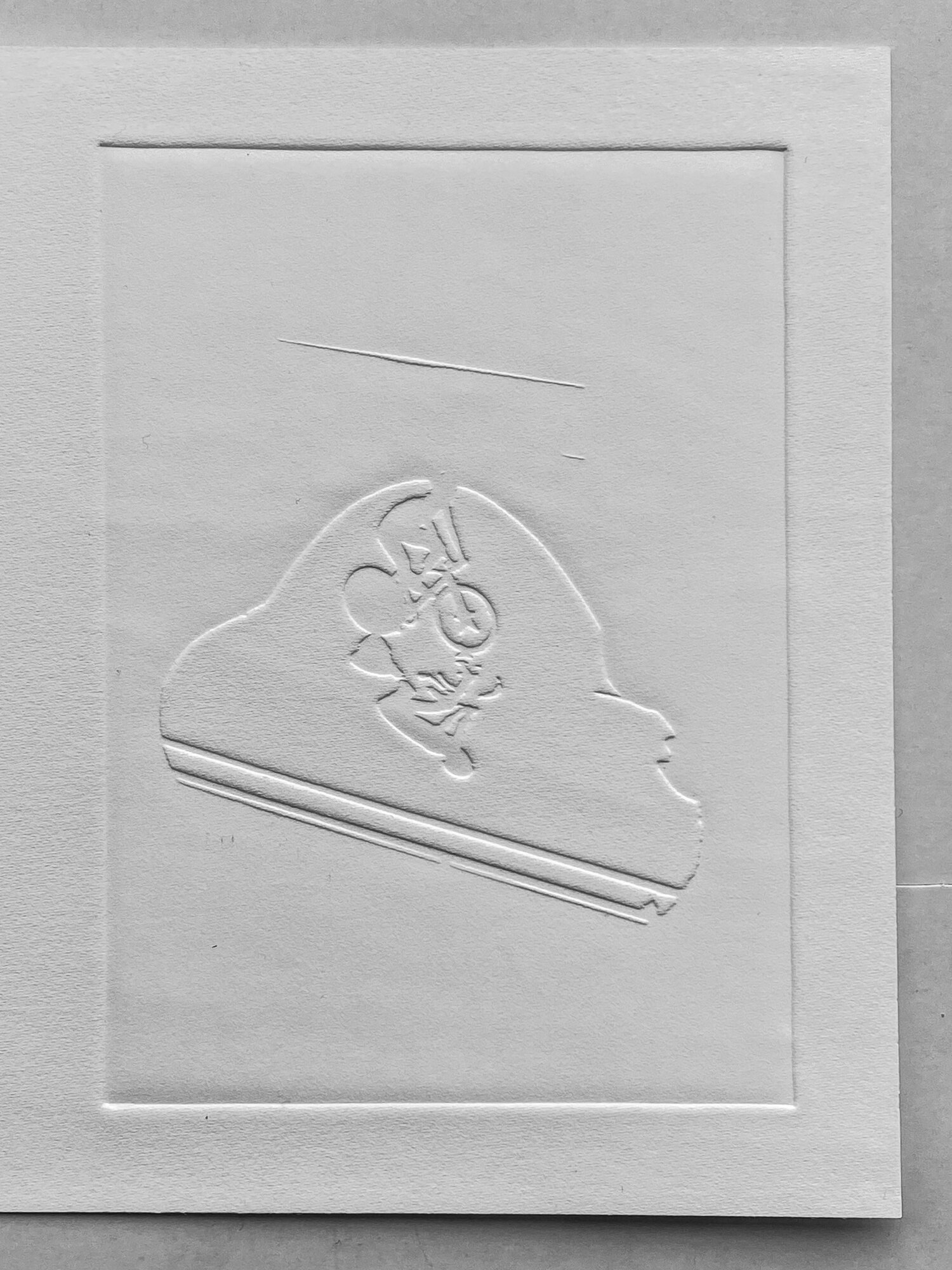
Photopolymer Etching
Etching, photoetching and photopolymer etching
Etching is an intaglio printmaking process in which lines or areas are incised into a metal plate, using acid, in order to hold the ink. In its most simple form, the metal plate is first covered with a ground that resists the acid. The artist then removes the ground, where they want a line to appear in the finished piece, exposing the bare metal to the acid. The use of aquatint – a fine screen ground – allows the artist to create continuous tones.
In photoetching or photogravure, a light sensitive photoresist is applied to the surface of the plate, to create a mask that shields some areas from the action of the acid. The design of the mask can be produced either through the creation of a transparent film – for example, a ‘digital negative’ – and then exposing the plate to UV light, through the film; or by directly projecting an image onto the plate. The plate is then etched, using acid, in the same way as a traditional etching.
Photopolymer etching works in a similar way to photogravure, in that a light sensitive coating is applied to a backing plate, before being exposed to light through a transparent film that carries the image design. However, in photopolymer etching, the plate is ‘etched’ with water, rather than acid. Increasingly, printmakers are experimenting with ‘direct to plate’ printing that doesn’t require the creation of a digital negative. In either case, the etched plates can be printed in either intaglio or relief. The process is capable of producing images of comparable quality to photogravure but without the use of such toxic chemicals.
Etching (and engraving) have been an important method for reproducing other images for centuries. Photogravure dates back to the earliest days of photography and was employed by several well-known photographers, such as Henry Fox Talbot, Alfred Stieglitz, Edward S Curtis and Paul Strand. It was also used in mass image production for newspapers and magazines. Photopolymer etching is also used in several commercial and industrial production processes.


